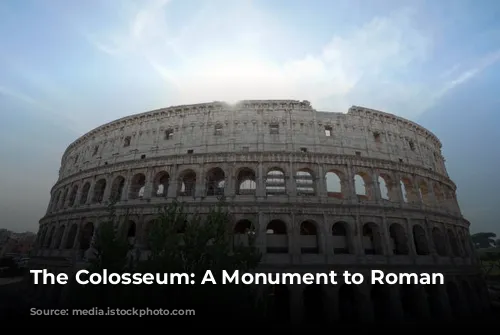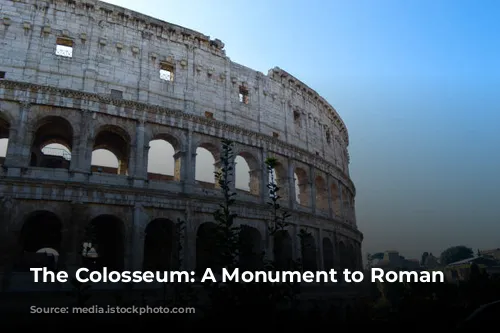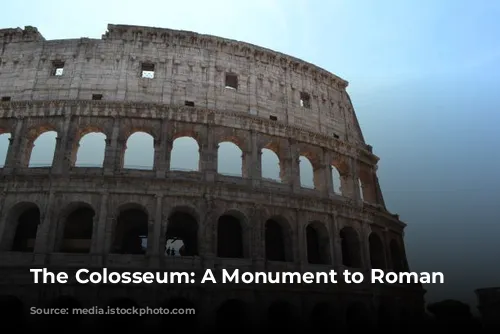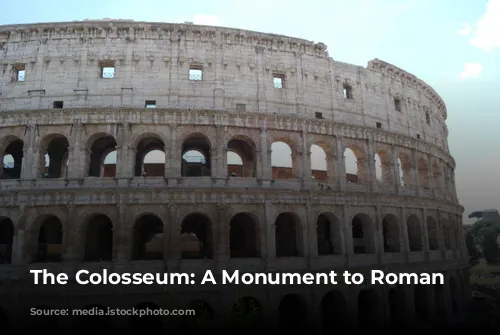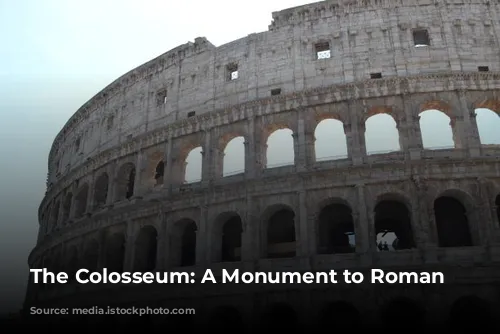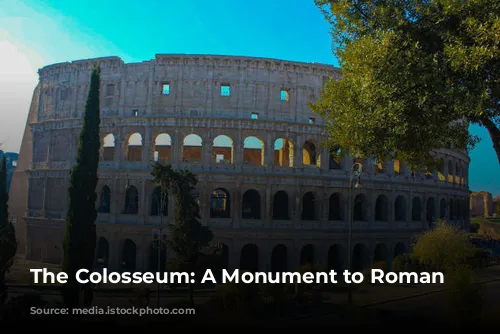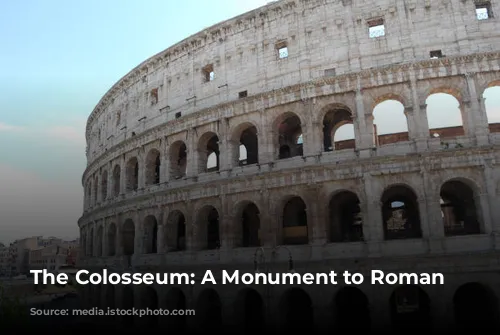The Colosseum, also known as the Flavian Amphitheatre, stands as a towering testament to the might and spectacle of the Roman Empire. This iconic structure, the largest and most imposing amphitheatre in the Roman world, is a must-see for any visitor to Rome.
A Monument to Imperial Power
The Colosseum was commissioned by Emperor Vespasian of the Flavian dynasty and inaugurated by his son Titus in 80 AD. Its grand opening ceremony, a 100-day extravaganza, showcased an array of thrilling spectacles, including gladiatorial combat, animal hunts, and even simulated sea battles known as naumachias. The scale of these events was truly staggering, with an estimated 5,000 animals slaughtered during the opening alone.
A Name with a Mystical Past
The name “Colosseum” appeared for the first time in a 12th-century prophecy by the Venerable Bede. He declared that “Rome will exist as long as the Colosseum does; when the Colosseum falls so will Rome; when Rome falls so will the world”. This prophecy might have been inspired by the colossal statue of Emperor Nero, “the Colossus,” that once stood near the amphitheatre. Although the statue has since vanished, the name “Colosseum” has endured.
An Architectural Marvel
The Colosseum is an impressive feat of Roman engineering. This elliptical structure was designed to hold over 70,000 spectators. It boasts four floors, with the first three adorned with eighty arches each. The arches on the second and third floors were further enhanced by majestic statues. The Romans’ mastery of the arch, a key element in their architectural vocabulary, enabled them to distribute the weight of this colossal structure effectively. It is truly remarkable that this impressive monument was built in less than a decade.
Inside the Colosseum: A Glimpse into Roman Entertainment
The Colosseum’s grandeur is evident even today, although it is merely a skeletal reminder of its former glory. Time and neglect have taken their toll, with three-fifths of the outer brick wall missing. Over centuries, its stones were quarried to build other structures, including St. Peter’s Basilica. The holes left in the columns serve as a poignant testament to this plundering of history.
A Stage for Spectacle and Social Hierarchy
The Colosseum’s seating arrangement reflected the social hierarchy of Roman society. While entry was free for all Roman citizens, the closer you sat to the arena, the higher your social standing. The front row was reserved for the elite, including senators, vestals, priests, and the emperor himself. Commoners occupied the upper tiers, with distinct sections for men and women.
A Marvel of Engineering
The Colosseum provided ingenious protection from the sun. A massive linen awning known as the “velarium” could be stretched over the arena, blocking out the sun’s rays. This feat of engineering required the coordinated efforts of 100 sailors from the Imperial fleet, who skillfully maneuvered the velarium using ropes, winches, and wooden poles.
A Glimpse into the Arena’s Depths
Descending into the Colosseum’s depths, we can explore the subterranean chambers that housed the machinery used to create the spectacular events. Lifts and hoists, their rails still visible, were used to raise gladiators and animals through trapdoors, creating dramatic entrances. These ingenious mechanisms added a layer of surprise and excitement to the spectacles.
Gladiatorial Combat: Blood and Spectacle
A Variety of Spectacles
The Colosseum hosted a diverse range of events, each with its own unique allure. “Venationes,” or animal hunts, pitted exotic animals against each other or against human opponents. The “Silvae,” staged with elaborate sets and scenery, recreated forest environments, offering viewers a glimpse into the natural world. While the Colosseum’s reputation is often associated with gladiatorial combat, it also hosted less gruesome spectacles, such as an elephant that could write words in the sand.
The Rise of the Gladiators
However, it was the gladiators who truly captivated the Roman audience. These warriors, often former prisoners of war or destitute individuals seeking fame and fortune, were revered as heroes. Their matches were a mix of skill, brutality, and spectacle. Different types of gladiators, armed with distinct weapons, clashed in the arena.
The Audience’s Role
The audience played an active role in these contests. Their roars of approval or disapproval could decide a gladiator’s fate. A defeated gladiator could plead for mercy, and the emperor, seated in his box, would decide whether to spare his life or sentence him to death with a simple gesture.
The Colosseum: A Reflection of Roman Society
The Colosseum was more than just a place for entertainment; it was a microcosm of Roman society, reflecting its values, its love of spectacle, and its fascination with power. The events held in the Colosseum provided the Romans with a sense of shared experience and a sense of unity. They also served as a distraction from the hardships of everyday life.
The Colosseum’s Legacy
The Colosseum, once the center of Roman entertainment, fell into disuse after the decline of the Roman Empire. It was plundered for its materials, its walls providing refuge for various groups, and its arena transformed into a cemetery. However, its enduring grandeur eventually captivated generations, and it has become a UNESCO World Heritage site, attracting visitors from around the world.
The Colosseum stands as a poignant reminder of the Roman Empire’s grandeur and its fascination with spectacle. While the arena itself is silent now, it echoes with the roar of the crowds, the clash of steel, and the thunder of the beasts. It remains a powerful testament to the enduring legacy of ancient Rome.
